Do your eyes feel scratchy, stingy, and irritated? These symptoms may indicate you have dry eye syndrome, a common condition that affects many people worldwide. There are different types of dry eyes based on the underlying cause of the dryness. Treatments are available for each type of dry eye and are catered towards the particular type of dry eye which is causing symptoms.
Types and Causes of Dry Eye
Dry eye occurs when your eyes don’t produce enough tears to maintain proper moisture and lubrication. There are two main types of dry eye: evaporative dry eye and aqueous-deficient dry eye.
Evaporative Dry Eye
Evaporative dry eye is the most common type of dry eye, occurring when there’s a problem with the meibomian glands.
These glands produce an oily substance that keeps your tears from evaporating too soon. When these glands are blocked or damaged, the tears evaporate too fast, resulting in dry eyes.
Aqueous Deficient Dry Eye
Aqueous-deficient dry eye is a less common type that occurs when your eyes don’t produce enough tears. Often, this type of dry eye stems from a problem with the lacrimal gland which is the primary producer of tears for the eyes.
This type is usually caused by an underlying autoimmune disease, such as rheumatoid arthritis, lupus, or Sjogren’s syndrome.
Common Treatments for Dry Eye
The treatment recommended for you depends on the cause and severity of your dry eye. Some treatments you and your eye doctor can consider include eye drops, eyelid hygiene, and lifestyle modifications.
Eye Drops for Dry Eye
Over-the-counter artificial tears or eye drops are usually the first lines of defense for mild to moderate dry eye symptoms. These eye drops help to lubricate the eye’s surface and compensate for a lack of natural tears.
These artificial tears are used multiple times a day or before bed to moisten the ocular surface and prevent irritation.
For moderate to severe dry eye, prescription eye drops and oral medications may be needed. Prescription eye drops, like Restasis and Xiidra, can help to reduce inflammation in the eye and promote tear production.
Eye Lid Hygiene
For evaporative dry eye, keeping the meibomian glands clear is essential. Warm compresses and gentle massage can help to unclog these glands and improve oil production.
Additionally, washing or cleansing the eyelids routinely will help remove excess debris and bacteria and prevent buildup which can lead to worsened dry eye symptoms.
Lifestyle Modifications
Making lifestyle changes can also help to manage your dry eye symptoms.
Reducing screen time, taking frequent breaks during computer work, wearing wraparound sunglasses outdoors, and avoiding dry, windy environments can all help to relieve dry eyes.
When to See an Eye Doctor
If you are experiencing persistent dry eye symptoms, it’s essential to consult an eye care professional. An eye doctor can perform a comprehensive eye exam to diagnose the type and severity of your dry eye, and then the doctor can recommend an appropriate treatment option to manage it.


0 Comments